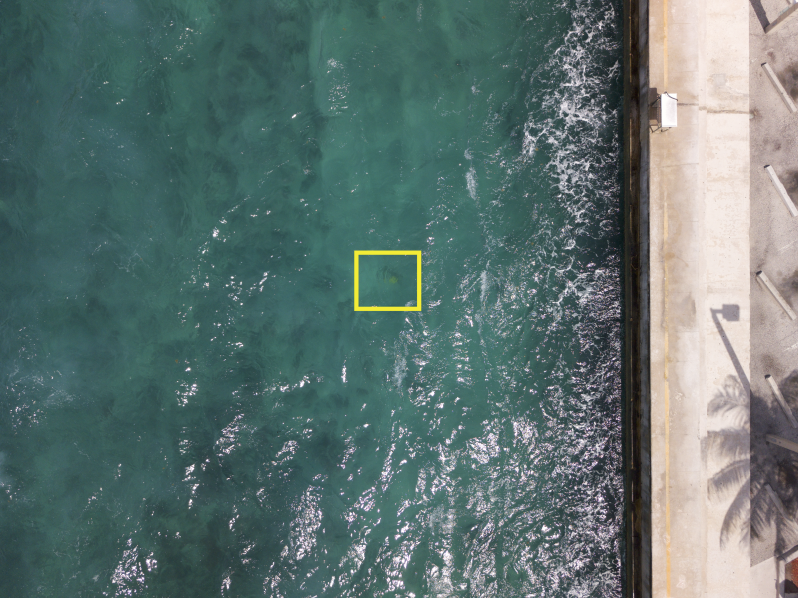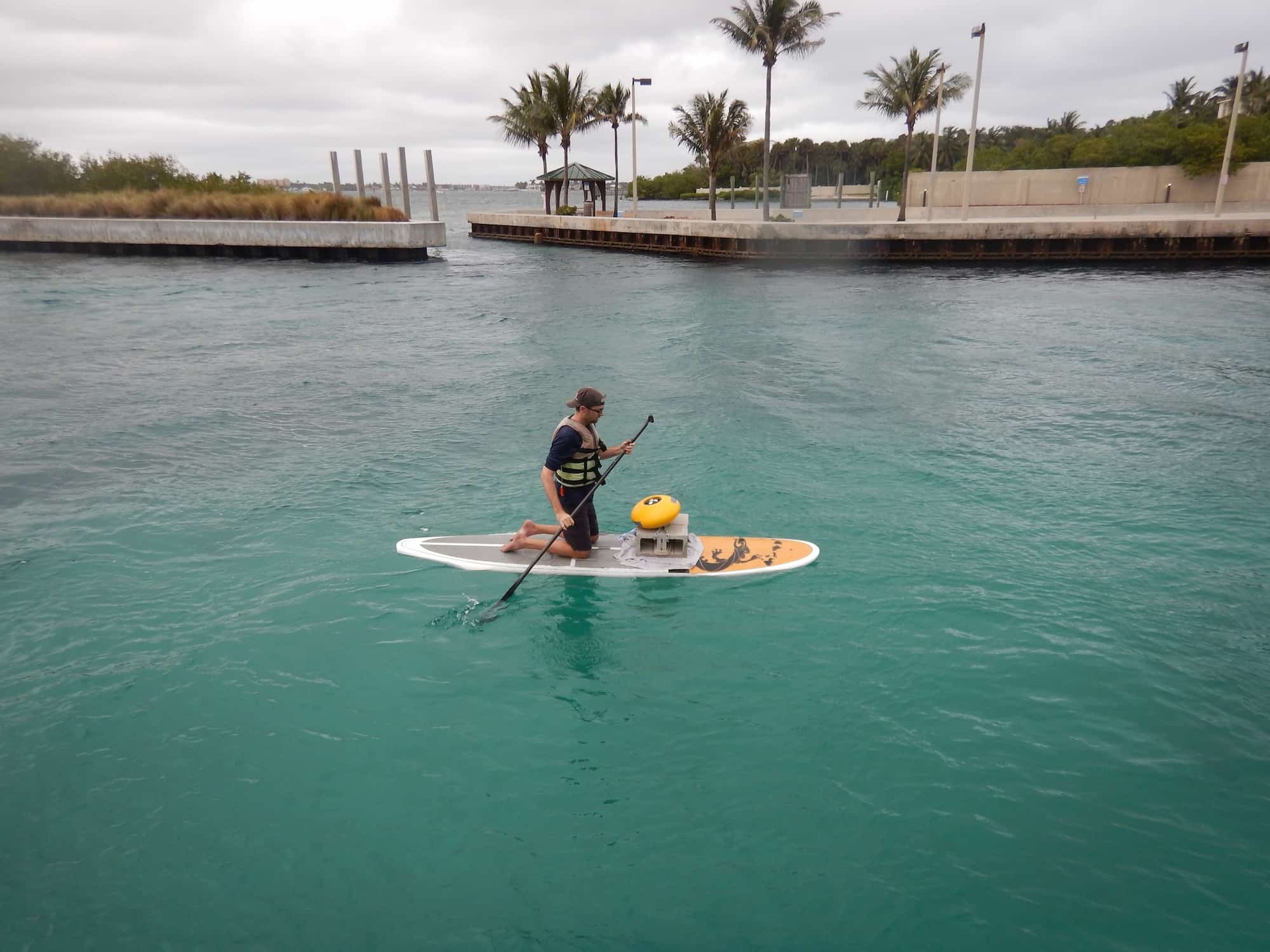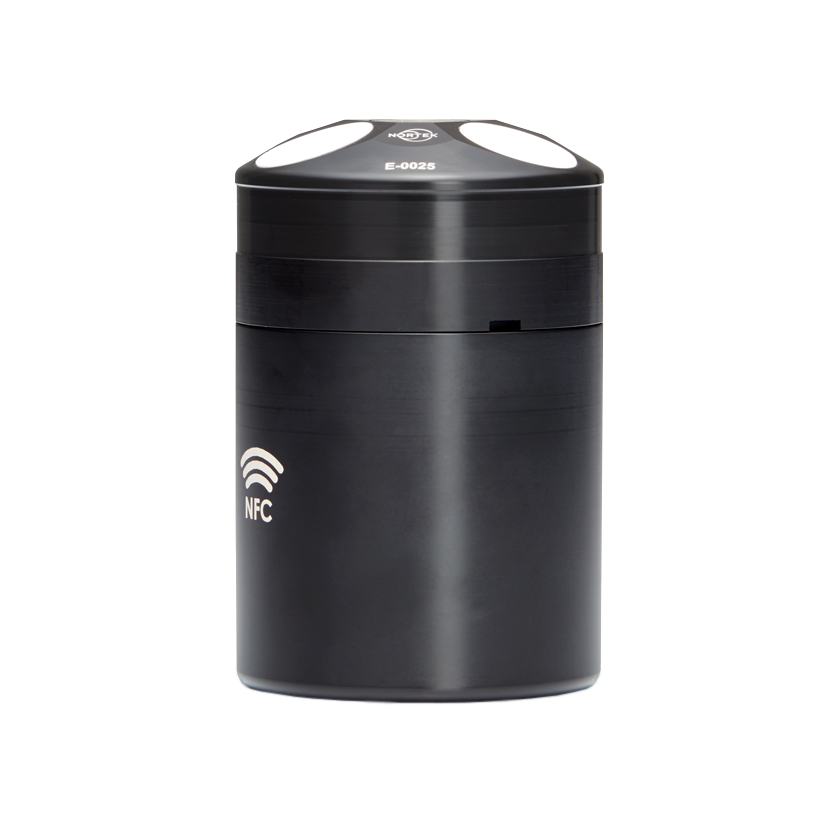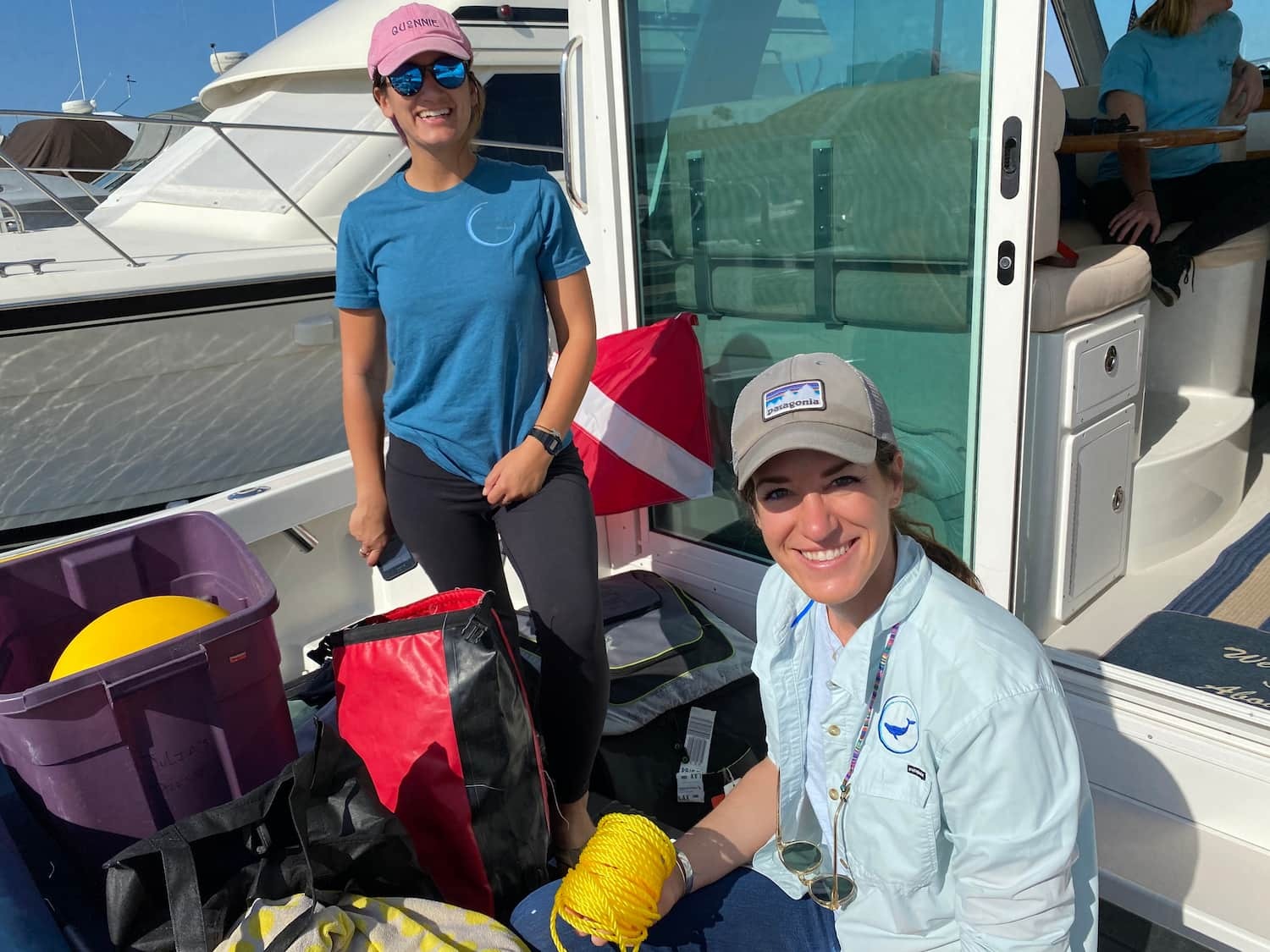
Identifying shallow-ocean currents in an unusual manta ray habitat with the Eco ADCP
- User stories
Synopsis
Challenge
Marine researcher Jessica Pate aimed to understand why manta rays in South Florida were frequenting a highly trafficked channel. Understanding the currents in the area was key to her research question.
Solution
Rather than relying on more primitive methods like tracking the speed of floating orange peels in the channel (which she previously tried), Pate used the Eco ADCP to measure the shallow-water currents.
Benefit
Because of the Eco's ease of deployment (Pate deployed from a stand-up paddleboard), Pate was able to collect accurate and high-quality current measurements to better understand the manta rays' behavior in the area.
Powerful yet graceful, manta rays top almost everyone’s list of must-see marine animals. While people flock to places like Indonesia or the Maldives to watch these gentle giants, one location has gone relatively unnoticed – South Florida.
“I lived in Florida working as a sea turtle biologist, and a lot of data collection involved being on the beach all day,” recounts Jessica Pate, a marine biologist with the Marine Megafauna Foundation. “Sometimes I would notice these big, black shapes swimming right next to shore in less than a meter of water.”

Surprised to see manta rays, Pate searched for more information but found very little. “I know hundreds of people researching sea turtles, and I couldn’t believe that no one was studying manta rays [in South Florida],” she says.
Pate has been working hard to rectify the lack of information on South Florida’s manta rays, and recently published a major study that revealed some key insights about the mantas that frequent South Florida – they are primarily juveniles.
Manta rays favor shallow water with strong currents
With Florida’s coast so highly developed, it is a surprising location for a nursery area. What’s more, these particular “urban manta rays” are also singling out some particularly hazardous locations.
“There’s this man-made inlet [Boynton Beach Inlet] that’s known for being one of the most dangerous inlets because it’s very skinny with seawalls, and boats come flying through. I try to avoid it at all costs,” Pate says.
Despite the risks, and the shallow water (Pate estimates Boynton Beach Inlet’s maximum depth to be around 10 m), the inlet seems to be a popular location for the manta rays. “They will come around and face into the current, which is really strong, and just sit,” says Pate, who sees groups of up to six manta rays sitting in the inlet for hours at a time.
“You just watch boat, after boat, after boat go right over them,” says Pate, noting that the manta rays can be in just a few meters of water when the boats are above them. “It seems like a really horrible place to be, so I’m really curious as to why they’re choosing that inlet.”
Exchanging floating oranges for accurate current flow measurement technology
Pate knew that currents in the inlet are fast, but to properly characterize the flow she needed to be able to measure them. However, the costs of purchasing an ADCP quickly became a major roadblock. In search of alternatives, Pate started to consider other, much less accurate, options.
“I did an experiment with the drone, where I tossed oranges into the water with the hope of measuring the surface current,” Pate says. Fortunately, when the Eco came along, Pate did not have to resort to oranges any more.

The Eco is designed with users like Pate in mind – those who are interested in understanding the physical nature of shallow-water environments but lack in-depth training or experience in using oceanographic instruments. Fitted with a transducer with a maximum profiling range of 20 m, plus sensors for temperature, pressure, tilt, and heading, the Eco offers such users a simpler, low-cost and user-friendly alternative to its larger, more heavily equipped sibling ADCPs.
“It was so easy to set up – all you do is go onto the online portal, input the time and date you want it to start recording, and deploy it,” says Pate.
Being just the size of a large coffee cup, the Eco is a natural fit for the shallows and is extremely portable – a feature which proved particularly useful when Covid-19 restrictions in April 2020 blocked access to the marina containing the boat Pate could use. Instead of using a boat, Pate’s boyfriend deployed the instrument using his stand-up paddleboard. With a little trial and error to find the correct weight to keep the instrument on the seafloor in the inlet’s strong current, deployment was a relatively straightforward procedure. Nevertheless, Pate was relieved to be able to access the boat in May in order to retrieve the Eco.

Effortless processing of current measurement data
Data collection is one thing, but for those like Pate who do not regularly work with oceanographic instruments, extracting the data and translating it into something meaningful can be a challenge.
For Pate, the deployment reports generated by the Eco were a boon.
“It was pretty idiot-proof,” she says, explaining that generating the reports simply requires connecting the Eco wirelessly to a website and waiting for the report (and the raw data) to be produced.
“When I got the reports, I was very excited that [the software] put everything together for me instead of sending me a spreadsheet with a bunch of data that I didn’t understand,” says Pate, who was quickly able to identify some interesting patterns from the visualizations provided.

“I learned that the surface current and the bottom current are not the same,” Pate recounts, noting that the bottom current is stronger than the surface, on incoming tides, and with the full moon.
Pate also discovered that current flow does not travel in a tidy east–west direction as expected, but seems to bounce off the sea walls.


Using the Eco ADCP to understand and raise awareness about manta ray habitat
For manta rays, which are listed as vulnerable to extinction by the International Union for Conservation of Nature, it is arguably vital. South Florida appears to be home to one of just three known manta ray nurseries in the world. “The manta rays are very young, so this is really important habitat for them to safely develop into adulthood,” Pate explains.
“We see a lot of fishing line entanglement and vessel strike on the manta rays and other species,” says Pate.
Key to designing measures to reduce our impact on the young rays is understanding why they are using the places they are. “For NOAA, the federal government, to designate critical habitat, you have to identify the physical and biological characteristics of that habitat to be able to say why are they here, and not here,” Pate explains.
Pate’s work with the Eco on the inlet has revealed some of the secrets to the manta rays’ particularly hazardous habitat choice.
To build up a complete picture of the manta rays’ habitat preferences, Pate would like to monitor other inlets to see if and when manta rays are using those, and measure current conditions in them. Armed with such information, Pate hopes to raise awareness about the manta rays and work with the community to ensure that these urban manta rays will be with us for a long time to come.
Read more about Jessica Pate’s work in this National Geographic article.








